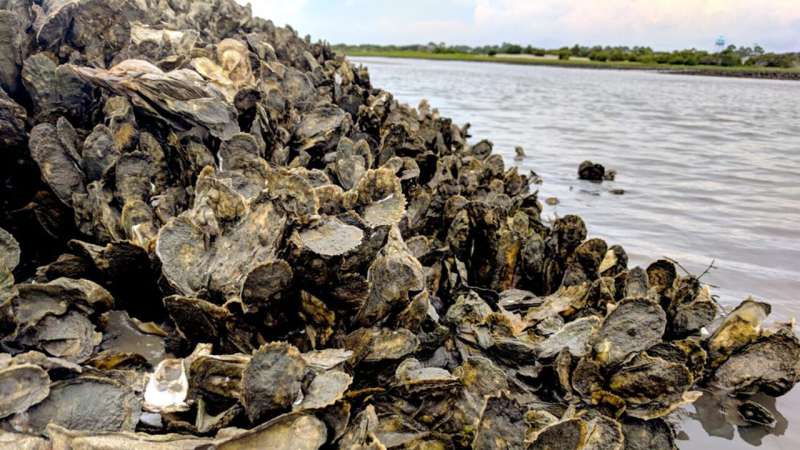What can researchers learn by eavesdropping on fish?

Oyster reef restoration provides important benefits, such as stabilizing shorelines, filtering water, and providing habitat for estuarine fish. However, quantifying fish use of restored oyster reefs can be difficult. Traditional sampling methods do not record all fish species and are often conducted only intermittently. As a result, fish diversity and resulting conservation and restoration decisions often rely on incomplete "snapshots" in time.
Luckily, many fish and invertebrates make sounds to communicate, navigate, and feed, providing the opportunity to "listen in" to learn about what species are present, when they are present, and what behaviors they exhibit on restored reefs.
Passive acoustic recording offers a non-destructive method to gather data on species of ecological and economic importance that traditional sampling misses. This information is vital for understanding fish behavior, including when and where certain species are spawning—a key to conservation and for establishing targets for habitat restoration.
Researchers at NC State University monitored oyster cultch reefs for two years following restoration, using a combination of traditional net and trap fish sampling and underwater acoustic surveys. In North Carolina, oyster cultch reefs are constructed primarily to provide oysters for harvest, and the NC State team wanted to determine their value as fish habitat, which is currently unknown.
Underwater recordings provided a robust record of fish species that use restored oyster reefs. The recordings complemented traditional fish sampling by detecting the species that nets and traps do not catch.
Overall, fish diversity on restored reefs increased over time. Recordings of the soundscape, as well as the nets and traps, captured more reef-dwelling fish—such as red drum, speckled trout, black drum, sheepshead, and oyster toadfish—as reefs developed. Reef-dwelling invertebrates, such as snapping shrimp and crabs, also appeared more frequently in the oyster reef soundscape over time.
The dominant sound producers on oyster reefs are red drum, croaker, spot, silver perch, speckled trout, snapping shrimp, and oyster toadfish. Red drum, speckled trout, and silver perch primarily made sounds in the oyster reef recordings related to spawning, suggesting that restored oyster cultch reefs may provide important spawning habitat for these species.
Preliminary results from this study suggest that (1) underwater recordings can be useful, non-destructive tools to learn more about fish habitat and can complement traditional fish sampling, and (2) cultch oyster reefs provide significant value as fish habitat.
Provided by North Carolina State University


















